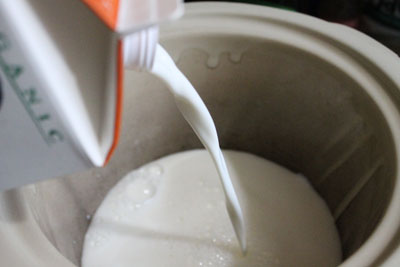Making your own yogurt is a good way to save money and cut down on packaging at the same time — and this method is so easy, you’ll never bother with store-bought again, especially after you taste the homemade stuff.
Ingredients
Half-gallon of milk
Half-cup of plain yogurt
Equipment
Slow cooker
Candy thermometer
Whisk
Towels
Oven

Dump the milk into your slow cooker, turn it on high, and ignore it. About two hours in, start checking it with the candy thermometer every 15 minutes until it reaches 180 degrees. That temperature will kill off any unwanted strains of bacteria that might be floating around in there.
When the milk reaches 180, shut off the slow cooker and ignore it some more. After about two and a half hours, start checking the temperature until it reaches somewhere between 105 and 115 degrees. That temperature is warm enough to incubate yogurt.

When the milk is between 105 and 115 degrees, whisk in half a cup of plain yogurt.

Remove the crock from the cooker, wrap it in towels, and set it in the oven. Turn the oven light on and leave it overnight. (Alternately, you can pour the milk into canning jars, close the jars tightly, and put them in a small cooler. Run hot tap water in the cooler up to the lids of the jars, close the cooler, and leave it on the counter overnight.)

In the morning, your milk will have turned to yogurt. Whole milk will generally produce thicker yogurt than skim, but you can adjust the thickness by straining the finished yogurt.

If you want Greek yogurt, line a sieve with a clean tea towel and set it on top of a bowl or pan.

Dump the yogurt into the sieve and let it drain in the refrigerator until its volume has reduced by about half.

Store in a sealed container in the refrigerator and use in smoothies or serve with granola and fruit. If you’re vegetarian or just trying to lose weight, Greek yogurt also makes a good low-fat way to sneak some extra protein into your diet — just stir in some ranch dressing mix and use as you would sour cream.
You can also make a tangy substitute for cream cheese by straining your Greek yogurt overnight.
Emily

